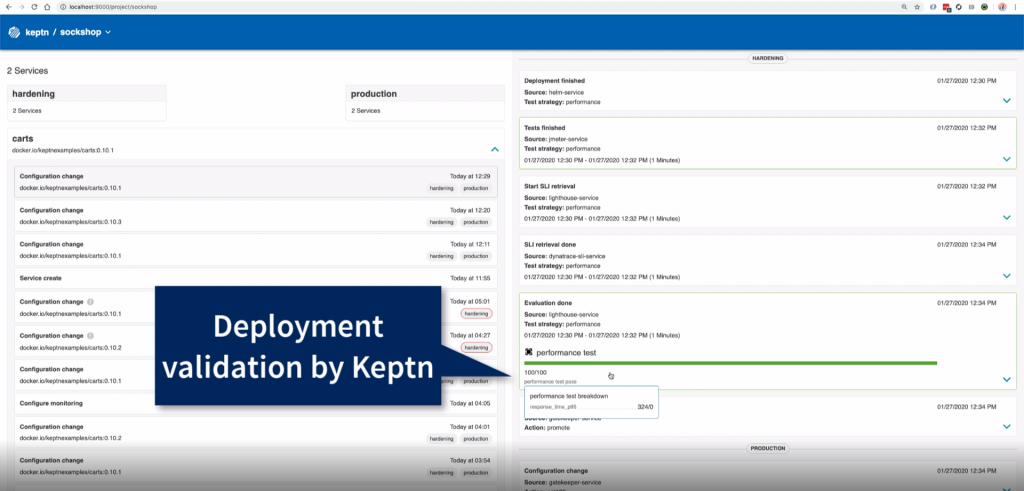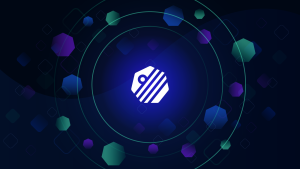Self-Service Progressive Delivery of Microservices, Automated SLI/SLO based Quality Gates, Continuous Feedback through ChatOps and Automatic Remediation of Production Issues are some of the capabilities you expect from a modern cloud-native software delivery platform.
In December Dynatrace announced Keptn, an open-source pluggable control plane enabling autonomous software delivery and operations for cloud-native applications. Mid-January, Keptn was included in the CNCF Landscape for Continuous Delivery and at the same time, Avodaq presented the How Keptn solves their challenges moving to Cloud Native & K8S (watch it on YouTube).

The recent improvements released in Keptn 0.6, a strong community with contributions from partners like Avodaq, Citrix or Neotys make it easier for everyone to build an autonomous cloud platform powered by Keptn. To get started – just follow the new Keptn Quickstart with a special gift from our friends at Google Cloud Platform!
Keptn Quickstart on GKE with $500 GCP credits
Run your Keptn installation for free on GKE! If you sign up for a Google Cloud account, Google gives you an initial $300 credit. For deploying Keptn you can apply for an additional $200 credit, which you can use towards that GKE cluster needed to run Keptn.
“Google GKE helps developers run advanced apps on a secured and managed Kubernetes service” said John Tripier, Partner Co-innovation Solution Lead at Google Cloud. “By launching these new tools, Dynatrace is enabling developers to further streamline and simplify their experience on GKE, ultimately helping businesses bring new services and products to their customers more quickly”
We want to say “Thank you Google” for your support on our mission towards Autonomous Cloud and helping us grow the user base of Keptn!
After you claimed your credit follow these 5 steps to test drive Keptn:
Step 1: Setup your GKE Cluster
Just follow the Keptn sizing and setup guidelines for GKE
Step 2: Install Keptn through the Keptn CLI
Just follow the Install Keptn instructions. It’s as easy as downloading the CLI and executing the following command:
$ keptn install --platform=gke
Step 3: Setup Progressive Multi-Stage Continuous Delivery for a Service
One of Avodaq’s challenges was having to maintain many pipeline scripts that implemented the logic of build, deploy, test, validate and promote. Keptn follows a declarative approach that eliminates the need for putting processes into scripts.
In order to set up a new Keptn project and onboard a service that will then be automatically delivered through your multi-stage delivery pipeline just follow the use case instructions on onboarding a custom service or watch the following video.
Congratulations: You have a self-service platform that allows you to deploy new versions of your service through a fully automated delivery pipeline with a single command:
$ keptn send event new-artifact --project=sockshop --service=carts --image=docker.io/keptnexamples/carts --tag=0.10.1
Step 4: Add SLO-based Quality Gates to your Delivery Pipeline
Automated promotion of an artifact from one stage to the next is great. But – what if the new version has performance, scalability or architectural flaws and therefore should never reach production? Keptn has a built-in quality gate capability that will evaluate a list of SLIs (Service Level Indicators) against SLOs (Service Level Objectives). Depending on the level of quality of the new artifact Keptn will either promote or stop an artifact. Keptn currently supports Dynatrace, Prometheus, and Neoload as SLI data sources.
To add a quality gate to your delivery pipeline simply follow the use case instructions on Deployments with Quality Gates or watch the following video.
Congratulations: You have a self-service platform that stops bad artifacts based on SLOs your developers define and store as an artifact in their Git repo. This is the end of bad deployments ending in production!
Step 5: Enable Auto-Remediation of Production Issues
Not every problem can be detected prior to the production environment. Some problems occur due to change in load patterns in production, an issue of the infrastructure or because of problems with individual features that are enabled through feature flagging frameworks. Keptn has a built-in capability for automating remediations based on problems detected by your production monitoring such as Dynatrace or Prometheus.
To add auto-remediation to your Keptn project simply follow the use case instructions for Self-Healing with Keptn or watch the following video.
Congratulations: You now have a self-service platform that auto-remediates problems in production. Gone are the times where you remote into machines during off-hours to fix problems manually.
More Keptn Use Cases
If you want to learn more check out our Keptn YouTube Channel where we can find more tutorials, demos as well as recordings of our Keptn community meetings.
Automate Keptn through the CLI and API
As you walk through the Use Cases you will notice that you can automate the interaction with Keptn either through the Keptn CLI or the Keptn’s API, e.g: push a new artifact through the progressive delivery pipeline. This allows you to easily integrate Keptn with other tools your using, e.g: Jenkins or GitLab Pipelines can build artifacts and then notify Keptn to deploy that new artifact!
Extend Keptn with custom services
If you want to extend Keptn with additional services or SLI providers check out the existing Keptn contributions and read up on how you can develop your own Keptn service.
Keptns Bridge
By now you have seen the Keptn’s Bridge which gives you full transparency into every stage, every deployment, every test, every quality gate evaluation, every promotion to another stage and how problems have been remediated. The following screenshot shows the early adopter version of the new Keptn’s bridge which you can easily enable by following the instructions here. We would be more than happy to get early feedback:

Got Feedback? Got Questions?
If you run into any problems or have questions, suggestions, ideas … explore these options
- Keptns Documentation
- Join our conversation on Slack
- Send us a Tweet
- Report a problem or enhancement idea on GitHub
- Join our future community meetings
Thanks for joining our ride to the Autonomous Cloud and Keptn as a project that gets us there faster!





Looking for answers?
Start a new discussion or ask for help in our Q&A forum.
Go to forum